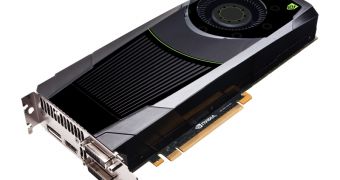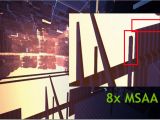The time has finally come when we can actually speak about NVIDIA's latest graphics card without having to give leaks and rumors as sources.
The Santa Clara, California-based company has formally launched the product, even setting up a nice and comprehensive product page here.
The company was actually quite quick when it came to releasing the driver of the card too. The GeForce 301.10 release showed up even before the card itself, by our reckoning. Go here to download it.
Spec-wise, the newcomer utilizes the GK104 graphics processing unit and runs it at 1,006 MHz. The GPU also has 1,536 CUDA cores.
All the above lead to a texture fill rate of 128.8 billion pixels per second.
Moving on, the memory specifications are as follows: 2 GB of GDDR5 VRAM with a clock of 6008 MHz (Gbps) and an interface of 256 bits. It all results in a bandwidth of 192.2 GB/s.
OpenGL 4.2 is supported, along with PCI Express 3.0, 3D Vision, 3D Vision Surround, CUDA, DirectX 11, PhysX and 3-way SLI.
Speaking of displays, up to four of them can be run at the same time by a single GTX 680, as opposed to how NVIDIA cards couldn't handle more than 2 up to now.
That said, the newcomer offers two dual-link DVI ports, an HDMI connector and a DisplayPort output, meaning that it is possible to have a 3-display 3D Vision Surround gaming session while keeping a fourth panel for web browsing, e-mails, etc.
As for image quality, NVIDIA implemented, as we've mentioned multiple times in previous articles, Adaptive V-Sync, the GPU boost technology (drives the GPU to 1,058 MHz) and the FXAA anti-aliasing.
What stands out in particular, though, is TXAA: an even more advanced algorithm that is supposed to be integrated directly into game engines.
“TXAA combines the raw power of MSAA with sophisticated resolve filters similar to those employed in CG films. In addition, TXAA can also jitter sample locations between frames for even higher quality,” the company says.
TXAA1 is the equivalent of 8x MSAA quality at 2x MSAA performance, while TXAA2 is better looking than 8x MSAA at 4x MSAA speed.
MechWarrior Online, Secret World, Eve Online, Borderlands 2, Unreal 4 Engine, BitSquid, Slant Six Games and Crytek have all chosen to implement TXAA support.

 14 DAY TRIAL //
14 DAY TRIAL // 


